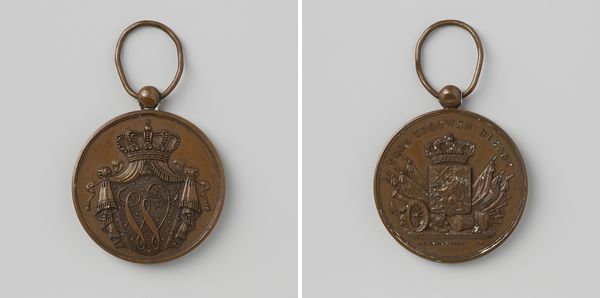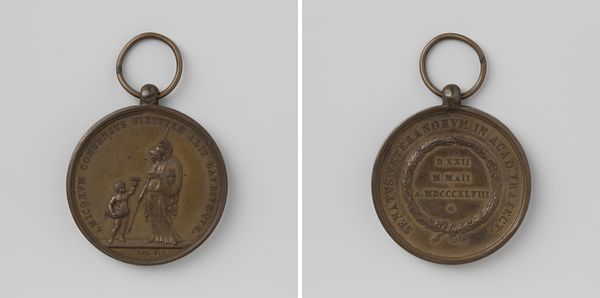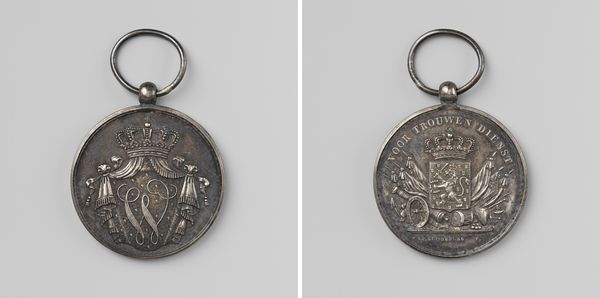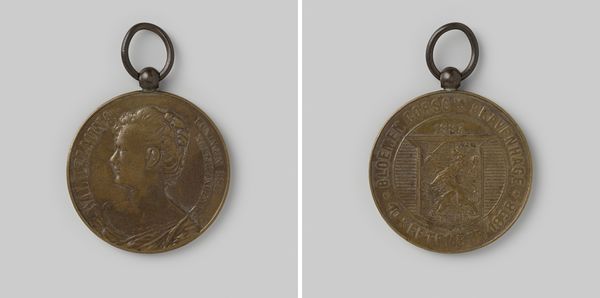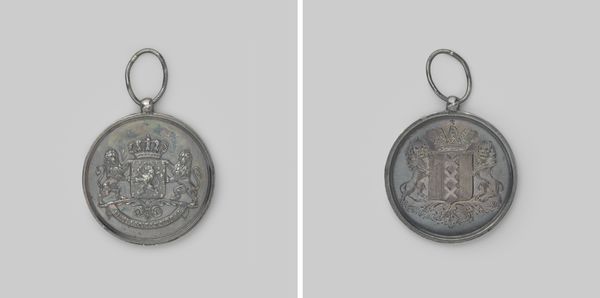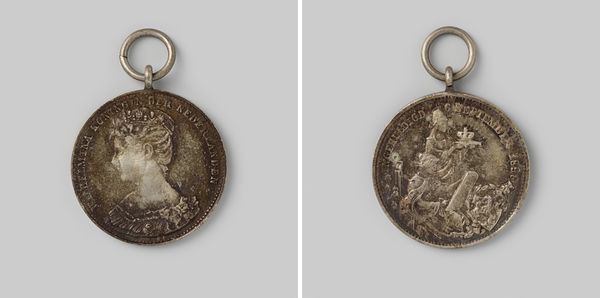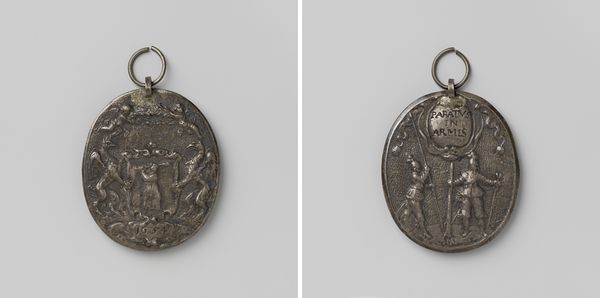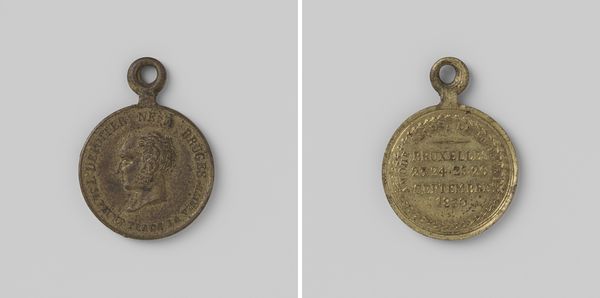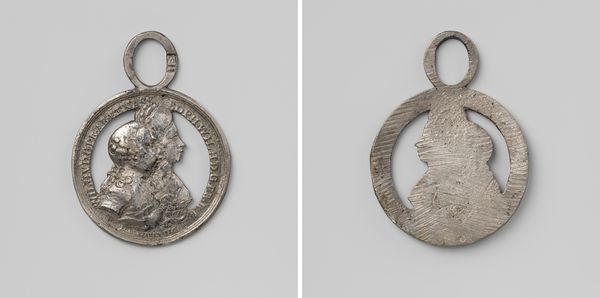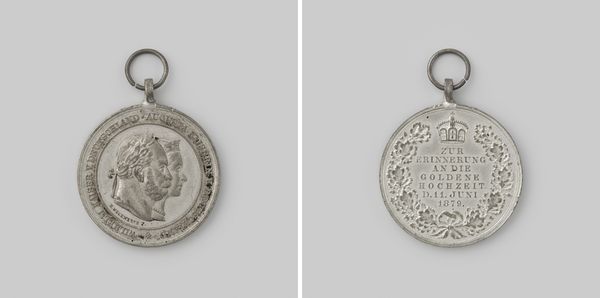
metal, relief, bronze, sculpture
#
portrait
#
metal
#
relief
#
bronze
#
ancient-mediterranean
#
sculpture
#
history-painting
#
academic-art
Dimensions: diameter 5.8 cm, diameter 4.2 cm, diameter 3.7 cm, weight 22.18 gr
Copyright: Rijks Museum: Open Domain
Editor: This object is called "Senatus Veteranorum van de hogeschool te Utrecht", created in 1814 by Johannes Petrus Schouberg. It's a bronze relief. The first thing that strikes me is how closely it emulates classical art forms, but what are your thoughts? What symbols are immediately apparent to you? Curator: Well, first off, the medium is very important. Bronze is incredibly durable, intended to communicate permanence. That loops back to antiquity, a nod to enduring legacies. Note how the artist positions the allegorical figure of Minerva alongside the torch bearing child: she represents wisdom and strategic warfare while the boy, presumably, represents youth and knowledge. Together, what memory of shared cultural identity do they construct for its intended audience? Editor: I see, the artist invokes Minerva to give a sense of authority and intellect, rooting the University in this powerful, enduring history. But what about the inscription? Does that add another layer of meaning? Curator: Absolutely! Notice how the inscription uses Latin—the language of the Roman Empire—'Senatus Veteranorum in Acad. Traiect'. Latin creates a direct connection to Roman traditions of governance, learning, and law, while suggesting continuity and a respect for the past. How do you interpret the date within the laurel wreath? Editor: Hmm, it commemorates an anniversary then, perhaps the college wanted to use those links to classical times to present a picture of long-standing academic excellence? Curator: Precisely. It suggests an unbroken chain of knowledge stretching back centuries, almost mythologizing the institution! The laurel wreath also signifies status and achievement. These are the elements through which institutions develop legitimacy. What else do you notice now that we've broken this down? Editor: Now that I see those connections to classical antiquity and ideas about authority, it’s easier to see the depth embedded in the work! Thanks for opening my eyes. Curator: The pleasure was all mine. Remember, even a small medal like this speaks volumes if we listen carefully.
Comments
No comments
Be the first to comment and join the conversation on the ultimate creative platform.
